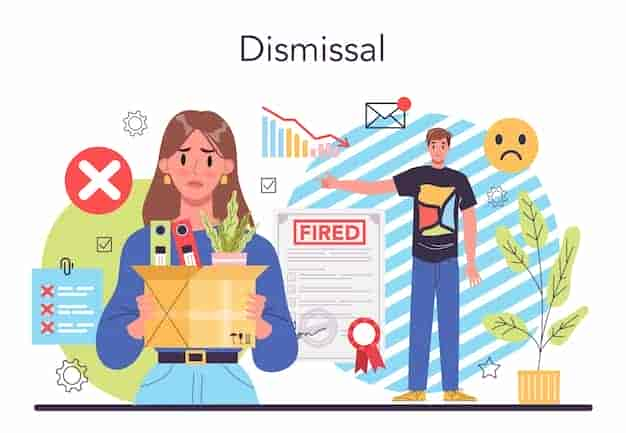Supporting Dyslexic Students: What Teachers Need to Know
Ellie Moore

Photo: Supporting Dyslexic Students: What Teachers Need to Know
Supporting Dyslexic Students: What Teachers Need to Know
Dyslexia is a common learning difference that affects how students read, write, and spell. Although the challenges dyslexic students face can seem overwhelming at times, the right support and strategies can empower these learners to thrive in the classroom. Understanding how to support dyslexic students effectively is a crucial skill for any educator. In this article, we’ll dive into the practical strategies teachers can use to help dyslexic students succeed, while also exploring the underlying science behind dyslexia and how it influences learning.
What is Dyslexia?
Dyslexia is a neurological condition that affects the way the brain processes written and spoken language. It’s important to note that dyslexia is not related to intelligence many dyslexic individuals are highly intelligent, but struggle with reading and writing due to their brain’s unique wiring.
Key Symptoms of Dyslexia
Dyslexic students may experience:
- Difficulty reading fluently and with accuracy
- Struggling to decode words or break them into syllables
- Trouble with spelling and handwriting
- Poor reading comprehension, even though they understand the material when spoken aloud
- Slow reading speed and challenges in expressing thoughts in writing
Understanding these common symptoms helps educators recognize dyslexia early on, which is vital for providing timely support.
How Does Dyslexia Affect Learning?
The impact of dyslexia extends far beyond simple reading difficulties. Dyslexic students often face challenges in several areas of their academic lives. Some of the ways dyslexia affects learning include:
- Reading comprehension: Difficulty with reading can lead to problems understanding and remembering what has been read.
- Writing struggles: Dyslexic students often have difficulty organizing their thoughts in writing, leading to issues with grammar and sentence structure.
- Difficulty with time management: Because tasks take longer for dyslexic students, they may fall behind on assignments and feel overwhelmed.
But with the right intervention, these challenges can be mitigated. Let’s explore some effective strategies teachers can use to help dyslexic students succeed.
10 Effective Strategies for Supporting Dyslexic Students
1. Use Multisensory Instruction
Multisensory teaching methods engage multiple senses to reinforce learning. For dyslexic students, combining visual, auditory, and kinesthetic (movement-based) strategies can help reinforce language processing. Some approaches include:
- Visual aids: Use charts, graphs, and color-coded materials.
- Auditory techniques: Encourage students to read aloud, or listen to audiobooks or speech-to-text software.
- Kinesthetic activities: Incorporate hands-on activities, like writing letters in sand or using clay to form words.
2. Offer Extra Time
Dyslexic students often need more time to complete assignments or take tests. By providing extra time, you allow them to process the information at their own pace, helping them to reduce anxiety and perform better.
3. Break Tasks Into Smaller Steps
Large tasks can be overwhelming for dyslexic students. Breaking assignments into smaller, manageable chunks allows them to focus on one thing at a time, increasing their chances of success.
- Start with simpler tasks and gradually increase complexity as the student gains confidence.
- Provide clear, written instructions along with verbal explanations.
4. Provide Audio and Visual Support
Many dyslexic students are auditory or visual learners. Providing materials in multiple formats such as audiobooks, videos, or text-to-speech tools can be immensely helpful. Tools like Read&Write or Kurzweil 3000 can read text aloud, which can improve comprehension.
5. Encourage the Use of Technology
Assistive technology plays a critical role in helping dyslexic students access learning. Some valuable tools include:
- Speech-to-text software: Programs like Dragon NaturallySpeaking help students dictate their thoughts instead of writing them out by hand.
- Text-to-speech tools: These help dyslexic students process text more easily by reading aloud what’s written.
6. Foster a Positive Learning Environment
A positive, understanding classroom environment can help dyslexic students feel confident and supported. Encourage growth mindsets, and reassure students that mistakes are a part of the learning process.
7. Use Phonics-Based Instruction
Phonics-based approaches focus on teaching the relationships between sounds and letters, a key area of difficulty for dyslexic students. Programs like Orton-Gillingham or Wilson Reading can be particularly effective in helping students master phonemic awareness and decoding skills.
8. Simplify Instructions and Provide Frequent Feedback
Clear, concise instructions can help prevent confusion. When giving directions, consider using simpler language and repeating key points to ensure comprehension. Additionally, offering regular feedback both positive and constructive helps students gauge their progress and stay motivated.
9. Offer Emotional Support
Dyslexia can often lead to frustration and feelings of inadequacy. It's essential to provide emotional support by building self-esteem and resilience. Encourage students, praise their effort, and remind them that they are capable of succeeding.
10. Incorporate Peer Support and Collaboration
Working with peers can be beneficial for dyslexic students. Pairing them with classmates who have strong reading and writing skills allows for cooperative learning. It also provides an opportunity for dyslexic students to practice social skills and gain confidence in a supportive environment.
The Role of Parents and Caregivers
While teachers play a crucial role in supporting dyslexic students, the involvement of parents and caregivers is equally important. Working together with parents can ensure a comprehensive support system for the student. Encourage regular communication between school and home, and provide parents with resources to continue support outside of the classroom.
Tips for Parents:
- Encourage daily reading at home, even if it’s only for a few minutes.
- Be patient and positive about the process, reinforcing the idea that progress is incremental.
- Explore outside resources like tutoring or dyslexia-focused programs for additional support.
Real-Life Success Stories: The Power of Early Intervention
Case studies have shown that early intervention can dramatically improve outcomes for dyslexic students. For example, a study by the International Dyslexia Association found that students who received early, structured intervention were more likely to perform at grade level compared to their peers who didn’t receive the same support.
One notable success story is that of Charles, a third-grade student who was diagnosed with dyslexia. After receiving targeted instruction using the Orton-Gillingham method, along with accommodations like extra time and speech-to-text software, Charles showed significant improvement in reading comprehension and writing skills. Today, he excels in his classes and continues to advocate for other students with learning differences.
Conclusion: Empowering Dyslexic Students for Success
Supporting dyslexic students requires a combination of understanding, patience, and effective instructional strategies. By incorporating multisensory methods, offering extra time, using assistive technology, and fostering a supportive classroom environment, teachers can help dyslexic students build the skills they need to succeed.
If you're an educator, take a moment to reflect on how you can incorporate some of these strategies into your classroom. Even small changes can make a significant impact on the success and confidence of your dyslexic students.
FAQ Section: Supporting Dyslexic Students
1. What is the best way to teach a dyslexic student to read?
Using a phonics-based approach, such as Orton-Gillingham, is one of the most effective ways to teach reading to dyslexic students. This method focuses on the relationships between letters and sounds, which can be challenging for dyslexic learners but is essential for reading development.
2. How can I help a dyslexic student with writing?
Provide dyslexic students with tools like speech-to-text software or graphic organizers. These tools can help them organize their thoughts and translate them into written words more efficiently.
3. What accommodations should be provided for dyslexic students?
Common accommodations include extra time for tests, oral presentations instead of written reports, and access to audio versions of texts. It’s important to tailor accommodations to the individual needs of the student.
4. Can dyslexia be cured?
Dyslexia is a lifelong condition, but with early intervention and ongoing support, dyslexic students can develop effective coping strategies and succeed academically.
Finance & Investment
View All
April 6, 2025
Save for Retirement Using Tax-Advantaged AccountsLearn how to save smarter for retirement with tax-advantaged accounts. Maximize your savings and secure your future today!
Ellie Moore

September 24, 2025
Toyota Finance Company DetailsMaster expert SEO content! Learn to craft high-quality, E-E-A-T driven content that ranks, satisfies users, and builds trust. Your guide to digital success.
Ellie Moore

November 29, 2025
What It Means to Finance a CarCreate expert SEO content that ranks high and truly helps your audience. Focus on E-E-A-T, originality, and a people-first approach for success.
Ellie Moore

July 2, 2025
Top Careers in Finance for 2025Boost your rankings & engage readers with expert SEO content. Discover how to deliver genuine value, build E-E-A-T, and satisfy user intent for Google.
Ellie Moore

October 2, 2025
72 Month 0 Percent Truck FinancingMaster expert SEO content to build digital authority. Drive organic traffic, boost rankings, and establish trust with high-quality, valuable content.
Ellie Moore

November 18, 2025
Jeep Financing Made AffordableUnlock online success in 2025! Discover how expert SEO content drives rankings, engagement & conversions. Create authoritative, valuable content that truly stan...
Ellie Moore
Insurance
View AllInsure your valuables! Learn what’s covered, from antiques to art, and how to ensure proper protection for collectibles.
Ellie Moore
Overpaying for car insurance? Discover top-rated solutions for optimal coverage & value. Protect your finances with our comprehensive guide.
Ellie Moore
Explore Nationwide Pet Insurance: plans, costs, coverage, claims, waiting periods, and market trends. Your ultimate guide to protecting your beloved pet.
Ellie Moore
Protect your journey! Discover why complete travel insurance is vital for safeguarding your finances and peace of mind from unexpected trip disruptions.
Ellie Moore
Secure superior protection with Premium Freeway Insurance Coverage. Go beyond basic policies to mitigate risks, ensure financial stability & peace of mind.
Ellie Moore
Navigate car insurance with confidence. This guide helps policyholders & risk managers find top-rated agents for optimal coverage, best value, and peace of mind...
Ellie Moore
Education
View AllIs a college degree still worth it? Dive into a detailed analysis of the ROI on higher education, including costs, benefits, and future prospects.
Read MoreOutdoor learning promotes cognitive and social growth. Explore how nature-based education enhances learning outcomes and student well-being.
Read MoreLearn how UNESCO promotes education for all globally. Explore key initiatives and efforts aimed at fostering equal learning opportunities for everyone.
Read MoreEthics in education is vital for balanced learning. Learn how to teach morality alongside knowledge transfer in today’s classrooms.
Read MoreDiscover why liberal arts education remains valuable in today’s tech-driven world. Explore how it fosters critical thinking and adaptability.
Read MoreDifferent cultures approach early education in unique ways. Discover how cultural values shape learning practices for young children around the world.
Read MorePopular Post 🔥
View All
1
2
3
4
5
6
7
8
9
10
Health






Automotive
View All
August 31, 2025
Top Rated Audio Amplifier Automotive Picks
Power up your ride! Our ultimate guide to top-rated car audio amplifiers helps you transform your sound. Get better quality, bass & expert tips.

February 9, 2025
EV Battery Health: How to Maximize Lifespan
Keep your EV running longer! Learn the best practices for maximizing battery health and extending its lifespan. Drive smarter today!

July 27, 2025
Jeff's Automotive Repair Services You Can Trust
Jeff's Automotive offers trusted car repair. Get reliable, honest service from expert mechanics, ensuring peace of mind for your vehicle.

August 5, 2025
Better Business Bureau Wiygul Automotive Burke Review
Searching for a reliable auto repair in Burke, VA? Explore Wiygul Automotive's BBB review & understand how BBB ratings ensure you find a trusted mechanic.

July 17, 2025
JP Automotive Offers Quality And Reliability
Experience unmatched quality & lasting reliability with JP Automotive. Your trusted partner for expert vehicle care & lasting peace of mind.

August 24, 2025
Harris Automotive Dependable Local Service
Choose a dependable local auto service for peace of mind. Harris Automotive offers trusted expertise, fair pricing, and top-tier care for your vehicle.

















